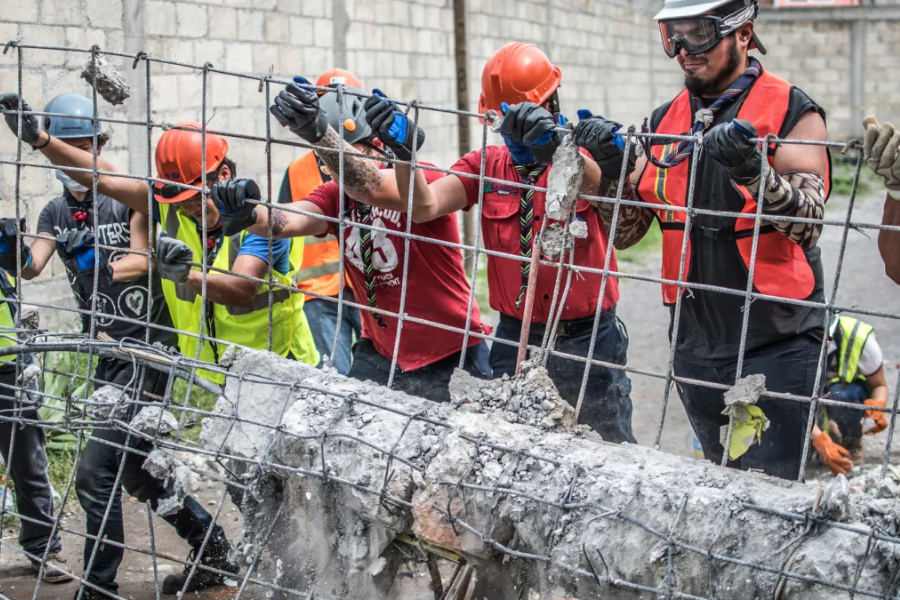Post Preview
Understanding Humanitarian Crises
Humanitarian crises are sudden, severe events resulting from natural or artificial conflicts. They often cause widespread devastation and displacement. Effective relief saves lives and mitigates the long-term impacts on affected communities, ensuring a smooth transition to normalcy. Reliable sources provide extensive insights into effective crisis management and response strategies.
Humanitarian crises are multifaceted, presenting unique challenges and requiring tailored responses. They disrupt daily life, causing food, water, and medical shortages. The psychological impact on affected populations is significant, necessitating comprehensive support for physical and mental health. Coordination between local and international agencies is crucial for addressing immediate needs and facilitating recovery effectively.
Assessing the Situation
A thorough evaluation of a crisis is essential before initiating relief efforts. Ahmed Shehata emphasizes the importance of identifying the affected population’s urgent needs, assessing the crisis’s scope, and pinpointing the hardest-hit areas. Accurate information from news outlets, government updates, and local organizations is critical. Key areas for assessment include food, water, shelter, healthcare, infrastructure damage, and safety concerns.
Immediate needs are essential to ensure necessities are met, while healthcare requirements are crucial to prevent disease outbreaks and provide care to injured individuals. Infrastructure damage is vital for aid delivery and aid logistics. Safety and security are top priorities, involving assessing potential hazards and coordinating with local authorities to ensure protection.
Mobilizing Resources
After completing an assessment, the next step is to mobilize resources, which includes gathering financial support and in-kind donations like food, water, and medical supplies. Efficient resource allocation is crucial to ensure aid reaches those in dire need promptly and effectively. Strategies for mobilizing resources during a crisis include community drives, business collaborations, online crowdfunding, and NGOs. Community drives engage local populations and generate substantial support, while business collaborations secure sponsorships and donations. Online crowdfunding allows for the rapid mobilization of funds, which is crucial in emergencies. NGO partnerships provide additional resources and expertise, often with established networks and experience in crisis management. These strategies ensure that aid reaches those in dire need promptly and effectively, minimizing delays that could exacerbate the crisis.
Coordinating with Local and International Agencies
Coordination is crucial to crisis response and collaboration with local and international agencies to ensure efficient aid delivery. This approach minimizes duplication of efforts and ensures aid reaches vulnerable populations quickly. Benefits of coordination include resource pooling, where shared resources and information are shared among organizations, maximizing the use of available resources. Different agencies bring unique expertise and experiences, enhancing the overall response strategy. Coordinated efforts enable better geographical coverage, reaching even the most remote areas and ensuring every population is provided with aid. Furthermore, efficient coordination enhances information flow and communication, giving all stakeholders timely and accurate information, fostering trust, and promoting improved decision-making. Overall, coordination enhances the overall effectiveness of crisis response.
Ensuring Effective Communication
Clear, effective, and timely communication is crucial during a crisis. Multiple channels, such as social media, radio broadcasts, and community meetings, can help disseminate critical information quickly and reach a broad audience—transparency and accountability foster public trust, encouraging more involvement in relief efforts. Clear communication also helps manage expectations and reduce panic among affected populations.
Real-time updates from social media platforms like Facebook, Instagram, and Twitter may be used to plan volunteer projects and rally support. Local radio and television effectively reach local populations, especially in areas with limited internet access. Community meetings allow for two-way engagement and address specific concerns, providing a platform for affected populations to voice their needs and receive accurate information. Government bulletins provide accurate and authoritative information, maintaining order and instilling confidence among the public.
Providing Medical Assistance
In crises, medical assistance is a top priority, involving setting up mobile clinics, distributing medical supplies, and deploying healthcare professionals to the frontline. Immediate medical interventions prevent disease outbreaks, treat injuries, and provide essential healthcare services. Long-term medical support, including vaccination drives and mental health services, is also necessary for community recovery. Critical medical interventions include mobile clinics, which provide accessible healthcare services to affected populations in remote areas, ensuring a steady supply of essential medicines and equipment, deploying medical teams to the frontline to address both immediate and ongoing health needs, and providing psychological support and counseling to address the mental health impacts of crises. These interventions address immediate health needs and build the foundation for long-term health resilience.
Supporting Long-Term Recovery
Humanitarian relief goes beyond immediate response and involves long-term recovery and rebuilding, including infrastructure rebuilding, food security, and educational opportunities for displaced children. Continuous and sustained support is crucial for communities to recover and become more resilient to future crises. Strategies for long-term recovery include rebuilding homes, schools, healthcare facilities, and transportation networks and prioritizing resilience to future disasters. Continuous medical care and mental health support address long-term health needs, including chronic disease management, rehabilitation services, and mental health care. Access to education for displaced children is essential for their development and community resilience. Community-led initiatives promote self-sufficiency, empowerment, and sustainable recovery, aligning recovery efforts with local needs and priorities. The World Bank emphasizes the importance of sustained humanitarian efforts in enhancing the effectiveness of crisis response and recovery.
Conclusion
Crisis response requires preparation, coordination, and compassion. Understanding needs, mobilizing resources, and working together can significantly impact those affected. Sustained support and coordinated efforts enhance response and recovery, allowing communities to rebuild and thrive. Global humanitarian disasters may be met with a more robust and encouraging response when people, groups, and governments work together.
Keep an eye for more news & updates on TimesAnalysis.Com!



